Are you dreaming of a Vietnamese adventure, weaving through stunning rice terraces and experiencing the vibrant culture of the north? Perhaps you’re wondering, “How Long Would It Take To Travel From Mu Cang Chai To Sapa?” SIXT.VN is here to guide you through this breathtaking journey, offering travel tips and convenient services to make your trip unforgettable. Discover the best routes, transportation options, and insider tips to ensure a smooth and enriching experience. Let us help you plan your perfect Vietnam getaway!
1. Understanding the Journey from Mu Cang Chai to Sapa
1.1. What is the Distance Between Mu Cang Chai and Sapa?
The distance between Mu Cang Chai and Sapa is approximately 160 kilometers (99.4 miles). While the distance may seem relatively short, the travel time can vary significantly due to the mountainous terrain and road conditions.
1.2. Why is This Route So Popular Among Travelers?
This route is highly sought after by travelers for its breathtaking scenery and unique cultural experiences. The journey offers panoramic views of terraced rice fields, lush valleys, and the majestic Hoang Lien Son mountain range. It’s a chance to immerse yourself in the authentic beauty of rural Vietnam.
1.3. What Makes This Journey Unique?
The uniqueness of this journey lies in the combination of stunning natural landscapes and encounters with local ethnic cultures. As you travel, you’ll pass through villages inhabited by various ethnic minority groups, offering a glimpse into their traditional way of life. The winding mountain roads add an adventurous element to the trip, making it an unforgettable experience.
2. Estimating Travel Time: Factors to Consider
2.1. What are the Road Conditions Like?
Road conditions between Mu Cang Chai and Sapa can be challenging, particularly in the rainy season. While some sections are well-maintained, others may be rough, rocky, or even muddy. This can significantly impact travel time.
2.2. How Does the Weather Affect Travel Time?
Weather plays a crucial role in determining travel time. During the dry season (September to May), conditions are generally favorable, allowing for smoother travel. However, in the rainy season (June to August), heavy rainfall can cause landslides, road closures, and reduced visibility, increasing travel time.
2.3. What Type of Vehicle Should I Use?
The type of vehicle you choose can greatly affect your travel time and comfort. Options include:
- Motorbike: A popular choice for adventurous travelers, motorbikes offer flexibility and the chance to fully immerse yourself in the scenery. However, they require experience and can be tiring for long journeys.
- Car/SUV: A more comfortable option, especially for families or those with more luggage. A 4×4 vehicle is recommended for navigating the challenging terrain.
- Bus/Minivan: A budget-friendly option, but can be less flexible and may take longer due to multiple stops.
2.4. Are There Any Breaks or Stops Planned?
Planning for breaks and stops is essential for a comfortable and enjoyable journey. Consider stopping at viewpoints to admire the scenery, visiting local villages to experience the culture, and taking breaks for meals and refreshments.
3. Detailed Transportation Options and Timelines
3.1. Traveling by Motorbike: A Detailed Guide
3.1.1. What is the Average Travel Time by Motorbike?
The average travel time by motorbike from Mu Cang Chai to Sapa is approximately 4-6 hours, depending on road conditions, weather, and your riding experience.
3.1.2. What are the Benefits of Motorbike Travel?
- Flexibility: Motorbikes allow you to stop wherever you want and explore at your own pace.
- Immersive Experience: You’ll be fully immersed in the scenery and local culture.
- Adventure: The challenging roads add an element of adventure to the journey.
3.1.3. What are the Challenges of Motorbike Travel?
- Road Conditions: Mountainous roads can be rough and challenging, especially in wet weather.
- Weather: Rain, fog, and cold temperatures can make the journey uncomfortable and even dangerous.
- Physical Exertion: Riding a motorbike for several hours can be tiring.
3.1.4. What Should I Prepare For Motorbike Travel?
- Proper Gear: Wear a helmet, protective clothing, and sturdy boots.
- Rain Gear: Pack a raincoat or waterproof jacket and pants.
- First-Aid Kit: Carry a basic first-aid kit for minor injuries.
- Navigation: Use a GPS device or map to navigate the route.
- Motorbike Maintenance: Ensure your motorbike is in good condition before starting the journey.
3.2. Traveling by Car/SUV: A Comfortable Option
3.2.1. What is the Average Travel Time by Car/SUV?
The average travel time by car or SUV is approximately 3-5 hours, depending on traffic and road conditions.
3.2.2. What are the Benefits of Car/SUV Travel?
- Comfort: Cars and SUVs offer a more comfortable ride than motorbikes, especially for long journeys.
- Safety: Cars and SUVs provide better protection in case of an accident.
- Luggage Space: You’ll have more space for luggage and other belongings.
3.2.3. What are the Challenges of Car/SUV Travel?
- Limited Flexibility: Cars and SUVs are less flexible than motorbikes and may not be able to access certain areas.
- Cost: Renting a car or SUV can be more expensive than renting a motorbike.
- Driving Experience: Navigating the mountainous roads requires experience and skill.
3.2.4. What Should I Prepare For Car/SUV Travel?
- 4×4 Vehicle: A 4×4 vehicle is recommended for navigating the challenging terrain.
- GPS Navigation: Use a GPS device to navigate the route.
- Snacks and Drinks: Pack snacks and drinks for the journey.
- Entertainment: Bring music or audiobooks to keep you entertained.
3.3. Traveling by Bus/Minivan: A Budget-Friendly Choice
3.3.1. What is the Average Travel Time by Bus/Minivan?
The average travel time by bus or minivan is approximately 5-7 hours, depending on the number of stops and traffic conditions.
3.3.2. What are the Benefits of Bus/Minivan Travel?
- Affordable: Bus and minivan travel is generally the most budget-friendly option.
- Relaxing: You can sit back and relax while someone else does the driving.
- Social: You’ll have the opportunity to meet other travelers.
3.3.3. What are the Challenges of Bus/Minivan Travel?
- Less Flexible: Buses and minivans have fixed routes and schedules, limiting your flexibility.
- More Stops: Buses and minivans often make multiple stops, which can increase travel time.
- Less Comfortable: Buses and minivans can be crowded and uncomfortable, especially for long journeys.
3.3.4. What Should I Prepare For Bus/Minivan Travel?
- Book in Advance: Book your ticket in advance, especially during peak season.
- Pack Light: Buses and minivans have limited luggage space.
- Bring Entertainment: Bring a book, music, or other entertainment to keep you occupied.
- Be Prepared for Delays: Buses and minivans can be delayed due to traffic or road conditions.
4. Recommended Routes and Itineraries
4.1. The Most Scenic Route: O Quy Ho Pass
The most scenic route from Mu Cang Chai to Sapa is via the O Quy Ho Pass, also known as the “Heaven’s Gate.” This route offers breathtaking views of the Hoang Lien Son mountain range, deep valleys, and lush forests.
4.1.1. What Can I Expect on the O Quy Ho Pass?
- Stunning Views: The pass offers panoramic views of the surrounding landscape.
- Challenging Roads: The roads are winding and steep, requiring careful driving.
- Cool Weather: The weather can be cool and foggy, even in the summer.
4.1.2. What are Some Tips for Traveling the O Quy Ho Pass?
- Check the Weather: Check the weather forecast before you go and avoid traveling in heavy rain or fog.
- Drive Carefully: Drive slowly and carefully, especially on the winding sections.
- Take Breaks: Stop at viewpoints to admire the scenery and take breaks.
4.2. A Cultural Immersion Route: Through Ethnic Villages
For a more immersive cultural experience, consider taking a route that passes through several ethnic villages. This will give you the opportunity to learn about the local culture and traditions.
4.2.1. Which Villages Should I Visit?
- Lao Chai Village: Home to the Black H’mong ethnic group, known for their traditional clothing and handicrafts.
- Ta Van Village: Inhabited by the Giay ethnic group, who practice unique farming techniques.
- Cat Cat Village: A popular tourist destination with traditional H’mong houses and stunning views.
4.2.2. What Activities Can I Do in the Villages?
- Visit Local Markets: Experience the vibrant atmosphere and buy local products.
- Attend Cultural Performances: Watch traditional dances and music performances.
- Stay in a Homestay: Immerse yourself in the local culture by staying with a local family.
- Trekking: Explore the surrounding rice terraces and mountains.
4.3. A Relaxing Itinerary: Two Days, One Night
If you have more time, consider a two-day, one-night itinerary to fully explore the region.
4.3.1. Day 1: Mu Cang Chai to Sapa via O Quy Ho Pass
- Morning: Depart from Mu Cang Chai and travel to Sapa via the O Quy Ho Pass.
- Afternoon: Stop at viewpoints to admire the scenery and take photos.
- Evening: Arrive in Sapa and check into your hotel. Explore the town and enjoy dinner.
4.3.2. Day 2: Exploring Sapa and Surrounding Areas
- Morning: Visit Cat Cat Village or take a trekking tour to explore the rice terraces.
- Afternoon: Visit Fansipan Peak, the highest mountain in Indochina, via cable car.
- Evening: Enjoy a traditional dinner and cultural performance.
5. Tips for a Safe and Enjoyable Trip
5.1. What are the Essential Safety Precautions?
- Check the Weather: Always check the weather forecast before starting your journey.
- Inform Someone of Your Plans: Let someone know your itinerary and expected arrival time.
- Carry Identification: Carry a copy of your passport and visa.
- Have Travel Insurance: Make sure you have travel insurance that covers medical emergencies and accidents.
5.2. How Can I Avoid Common Scams?
- Be Wary of Overly Friendly Strangers: Be cautious of people who approach you offering unsolicited help.
- Negotiate Prices: Always negotiate prices before agreeing to a service.
- Use Reputable Services: Use reputable transportation and tour services like SIXT.VN.
5.3. What are the Local Customs to Respect?
- Dress Respectfully: Dress modestly when visiting temples and other religious sites.
- Ask Permission Before Taking Photos: Ask permission before taking photos of people or private property.
- Learn Basic Vietnamese Phrases: Learning a few basic Vietnamese phrases can go a long way in showing respect.
6. Enhancing Your Trip with SIXT.VN Services
6.1. How Can SIXT.VN Help Me Plan My Trip?
SIXT.VN offers a range of services to help you plan your trip, including:
- Travel Consultation: Our expert travel consultants can help you design a personalized itinerary.
- Airport Transfer: We provide safe and convenient airport transfer services.
- Hotel Booking: We offer a wide selection of hotels to suit your budget and preferences.
- Sightseeing Tours: We organize professional and engaging sightseeing tours of Hanoi and surrounding areas.
- Flight Booking: We assist you in booking flights with the best prices and convenient schedules.
6.2. What are the Benefits of Using SIXT.VN?
- Convenience: We handle all the details of your trip, so you can relax and enjoy your vacation.
- Reliability: We are a trusted and reliable travel service provider.
- Expertise: Our team has extensive knowledge of Vietnam and can provide valuable insights.
- Support: We offer 24/7 customer support to assist you with any questions or concerns.
6.3. How Do I Book Services with SIXT.VN?
You can book services with SIXT.VN through our website, by phone, or by visiting our office at 260 Cau Giay, Hanoi, Vietnam. Contact us via Hotline/Whatsapp: +84 986 244 358.
7. Accommodation Options in Sapa
7.1. Luxury Hotels with Mountain Views
For a luxurious stay, consider hotels like:
- Hotel de la Coupole – MGallery: Offers stunning views and French-inspired design.
- Sapa Clay House – Mountain Retreat: Provides a unique and eco-friendly experience.
7.2. Budget-Friendly Hostels and Guesthouses
If you’re on a budget, check out:
- Sapa Capsule Hotel: A modern and affordable option.
- Little Sapa Hostel: Offers a cozy and friendly atmosphere.
7.3. Homestays for a Cultural Experience
For an authentic cultural experience, consider staying in a homestay in one of the surrounding villages.
8. Activities and Attractions in Sapa
8.1. Trekking to Rice Terraces and Villages
Trekking is a must-do activity in Sapa, offering breathtaking views of the rice terraces and a chance to visit local villages.
8.2. Visiting Fansipan Peak
Take a cable car to the top of Fansipan Peak, the highest mountain in Indochina, for panoramic views of the surrounding landscape.
8.3. Exploring Local Markets
Visit the Sapa Market to experience the vibrant atmosphere and buy local products, such as handicrafts, textiles, and souvenirs.
9. What to Pack for Your Trip
9.1. Clothing Essentials
- Layers: Pack clothing that can be layered, as the weather in Sapa can change quickly.
- Warm Jacket: Bring a warm jacket, especially if you’re traveling in the winter months.
- Rain Gear: Pack a raincoat or waterproof jacket and pants.
- Comfortable Shoes: Wear comfortable shoes for trekking and walking.
9.2. Health and Safety Items
- First-Aid Kit: Carry a basic first-aid kit for minor injuries.
- Insect Repellent: Use insect repellent to protect yourself from mosquito bites.
- Sunscreen: Use sunscreen to protect yourself from the sun, even on cloudy days.
9.3. Other Useful Items
- Camera: Bring a camera to capture the stunning scenery.
- Binoculars: Use binoculars to get a closer look at the mountains and valleys.
- Adapter: Bring a power adapter if your devices use a different plug type.
10. Frequently Asked Questions (FAQs)
10.1. Is it safe to travel from Mu Cang Chai to Sapa?
Yes, it is generally safe to travel from Mu Cang Chai to Sapa, but it’s important to take precautions, such as checking the weather, driving carefully, and using reputable transportation services.
10.2. What is the best time to visit Sapa?
The best time to visit Sapa is during the dry season (September to May), when the weather is generally favorable and the rice terraces are at their most beautiful.
10.3. How much does it cost to travel from Mu Cang Chai to Sapa?
The cost of travel depends on the transportation option you choose. Motorbike travel is generally the cheapest, while renting a car or SUV can be more expensive.
10.4. Can I travel from Mu Cang Chai to Sapa by train?
No, there is no direct train from Mu Cang Chai to Sapa. The nearest train station is in Lao Cai, which is about 35 kilometers (22 miles) from Sapa.
10.5. Do I need a visa to visit Vietnam?
Most nationalities require a visa to visit Vietnam. Check the visa requirements for your country before you travel.
10.6. What currency is used in Vietnam?
The currency used in Vietnam is the Vietnamese Dong (VND).
10.7. What language is spoken in Sapa?
The main language spoken in Sapa is Vietnamese. However, many locals also speak English and other languages.
10.8. Are there ATMs in Sapa?
Yes, there are ATMs in Sapa, but it’s a good idea to bring some cash with you, especially if you’re planning to visit remote areas.
10.9. What is the food like in Sapa?
Sapa is known for its delicious and unique cuisine, including dishes like Thang Co (horse meat stew), black chicken, and grilled pork.
10.10. Can I hire a local guide in Sapa?
Yes, you can hire a local guide in Sapa to take you trekking and show you around the villages.
11. Conclusion: Your Adventure Awaits
Traveling from Mu Cang Chai to Sapa is an unforgettable experience, offering stunning scenery, unique cultural encounters, and thrilling adventures. With careful planning and the right services, you can make the most of your trip and create lasting memories. Let SIXT.VN be your trusted partner in exploring the beauty of Vietnam. Contact us today to start planning your dream adventure!
Don’t let the challenges of planning your trip hold you back from experiencing the beauty of Vietnam. Visit SIXT.VN today to explore our comprehensive travel services and start planning your unforgettable adventure! Let us take care of the details, so you can focus on creating memories that will last a lifetime. Whether you’re seeking a relaxing getaway or an action-packed adventure, SIXT.VN has the perfect solution for you. Discover the ease and convenience of our services and embark on your dream journey with confidence. Contact us now and let the adventure begin!
 Scenic rice terraces in Mu Cang Chai
Scenic rice terraces in Mu Cang Chai
 A packed motorbike carrying supplies and people
A packed motorbike carrying supplies and people
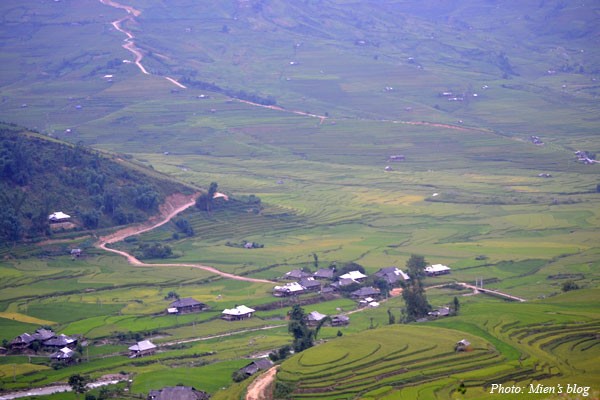 Picturesque valley view on the way to Mu Cang Chai
Picturesque valley view on the way to Mu Cang Chai
 Local children encountered during a road trip
Local children encountered during a road trip
 Picturesque nature surrounding lunch spot
Picturesque nature surrounding lunch spot
 Scenic valley view during a road trip
Scenic valley view during a road trip
 A rustic dwelling spotted along the route
A rustic dwelling spotted along the route
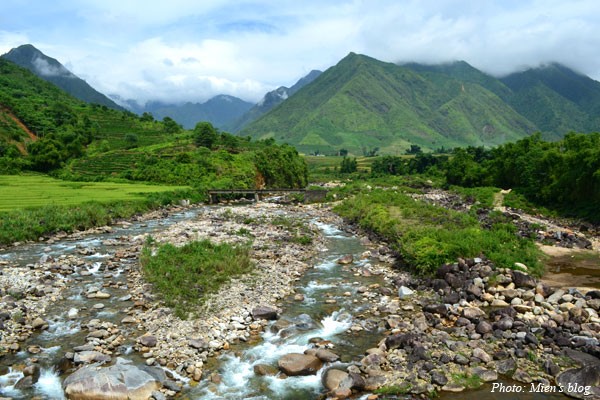 Clear stream along the road
Clear stream along the road
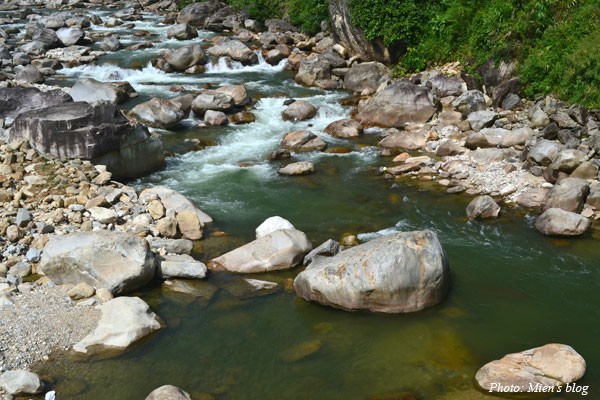 Relaxing spot by a stream along the way
Relaxing spot by a stream along the way
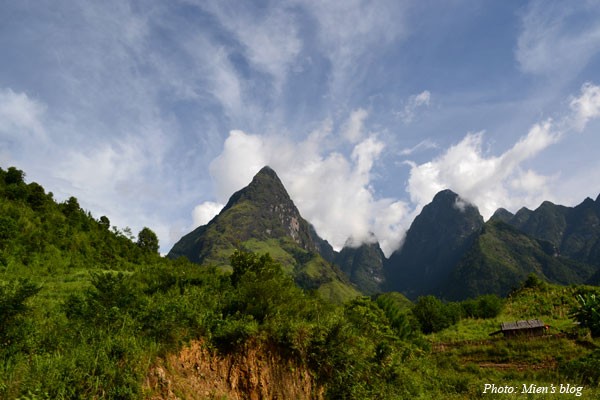 A panoramic view of high mountains
A panoramic view of high mountains
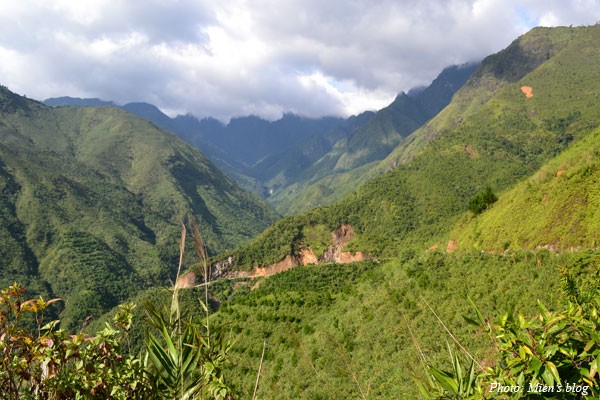 Hoang Lien Son mountain range view
Hoang Lien Son mountain range view
 Another perspective of Hoang Lien Son mountains
Another perspective of Hoang Lien Son mountains
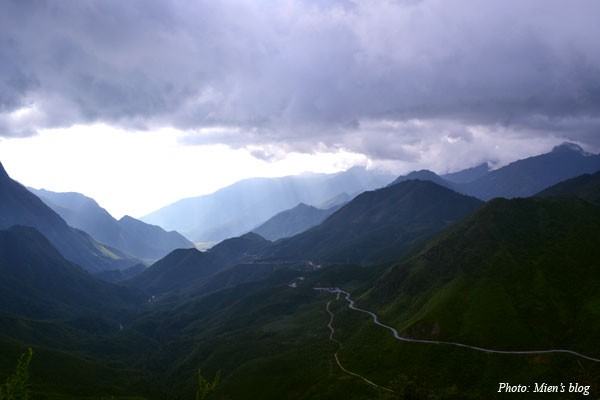 Panoramic view from O Quy Ho pass
Panoramic view from O Quy Ho pass
 Group photo in misty Sapa
Group photo in misty Sapa
 The famous terrace fields of Sapa
The famous terrace fields of Sapa
 View of the beautiful valley in Sapa
View of the beautiful valley in Sapa



